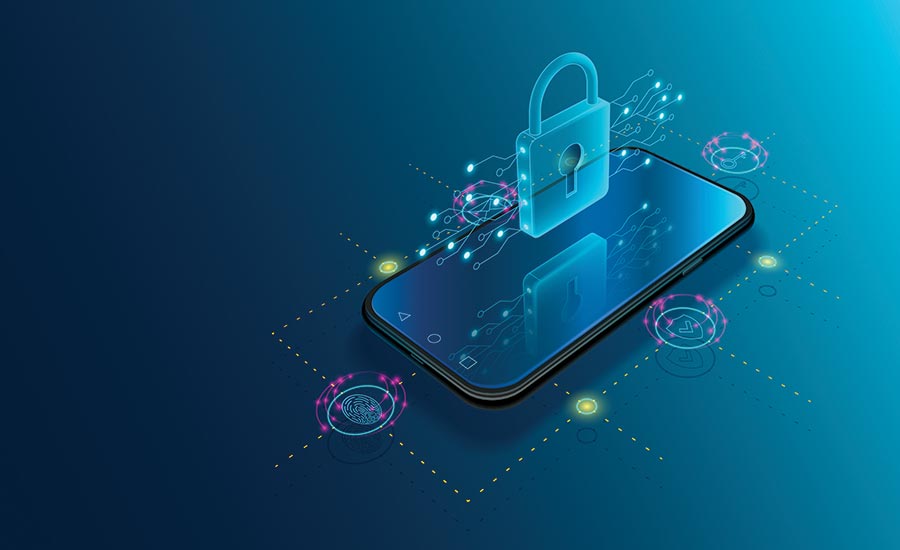In today's digital age, mobile devices have become an integral part of our lives. From communication to banking, we rely on our smartphones and tablets for a wide range of tasks. However, with this increased reliance comes an increased risk of cyber threats and data breaches. Securing your mobile devices is crucial to protect your personal information and maintain your digital privacy. In this blog post, we'll explore various strategies and best practices to help you fortify the security of your mobile devices.
1. Keep Your Software Updated
One of the most fundamental steps in securing your mobile device is to keep its operating system and apps up to date. Software updates often include critical security patches that address vulnerabilities that could be exploited by cybercriminals. Set your device to automatically update its software to ensure you're always running the latest and most secure versions.
2. Use Strong, Unique Passcodes
Locking your device with a passcode, PIN, or pattern lock is essential. Make sure to use a strong and unique combination that's not easily guessable. Avoid using easily accessible information like birthdays or common sequences (e.g., 1234). Consider using biometric authentication methods like fingerprint or facial recognition for an extra layer of security.
3. Enable Device Encryption
Most modern smartphones and tablets come with built-in encryption features. These features protect the data on your device, making it unreadable without the proper credentials. Enable device encryption in your device settings to safeguard your personal information, including emails, messages, and files.
4. Use Two-Factor Authentication (2FA)
Two-factor authentication adds an extra layer of security to your accounts by requiring you to provide two forms of verification. Whenever possible, enable 2FA for your email, social media, and other critical apps. This typically involves receiving a one-time code via SMS, email, or a dedicated authentication app, in addition to your password.
5. Be Cautions Of Public Wi-Fi
Public Wi-Fi networks can be a breeding ground for cyberattacks. Avoid conducting sensitive transactions or accessing confidential information when connected to public Wi-Fi. If you must use public Wi-Fi, consider using a virtual private network (VPN) to encrypt your internet traffic and protect your data from prying eyes.
6. Install Antivirus And Anti-Malware Software
Just like your computer, mobile devices can also fall victim to viruses and malware. Install reputable antivirus and anti-malware software to scan for and remove malicious software that may compromise your device's security. Keep these programs updated to ensure they can effectively protect your device.
7. Download Apps From Trusted Sources
Only download apps from official app stores like the Apple App Store or Google Play Store. These platforms have stringent security measures in place to screen apps for malware and other threats. Avoid sideloading apps from third-party sources, as these can be a significant security risk.
8. Review App Permissions
When you install an app, it often requests various permissions to access your device's features and data. Review these permissions carefully and consider whether they are necessary for the app to function. Restrict access to sensitive information whenever possible.
9. Back Up Your Data
Regularly back up your mobile device's data to a secure cloud service or an external storage device. In case your device is lost, stolen, or compromised, you can restore your data without losing important information.
10. Enable Remote Tracking And Wiping
Both iOS and Android offer built-in features for tracking and remotely wiping your device if it's lost or stolen. Enable these features and set up tracking apps or services to increase the chances of recovering your device or protecting your data.
11. Educate Yourself
Stay informed about the latest cybersecurity threats and best practices. Follow reputable cybersecurity blogs and news sources to stay up to date with emerging threats and how to protect yourself against them.
Conclusion
Securing your mobile devices is an ongoing process that requires vigilance and awareness. By following these best practices, you can significantly reduce the risk of falling victim to cyberattacks and protect your personal information. Remember that cybersecurity is a shared responsibility, and taking proactive steps to secure your mobile devices is essential in today's digital world.
Copyright 2017-2025 All Rights Reserved to CODELANCER CYBER SECURITY
Secured by CFRM
 September 12, 2023 - By CODELANCER
September 12, 2023 - By CODELANCER